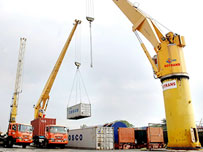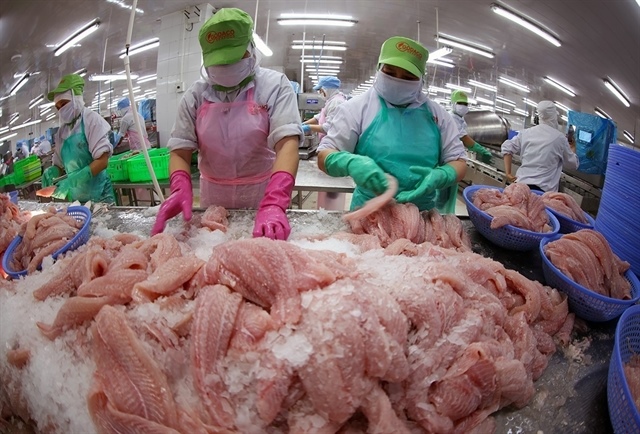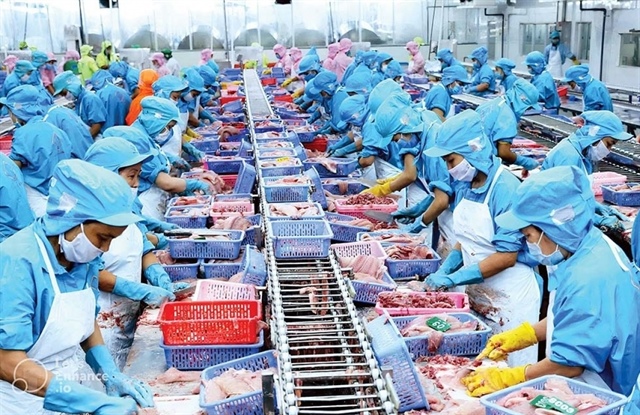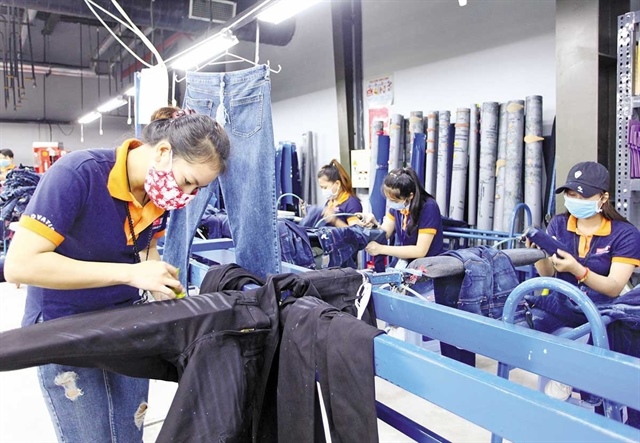Maintaining trade deficit cut a tough ask
Maintaining trade deficit cut a tough ask
Vietnam will find it difficult to sustain into the new year the trade deficit reduction that it managed in 2011, given that it plans to reduce import tariffs on many products and that the ongoing global recession could hurt its exports, experts say.
 |
Vietnam’s trade deficit narrowed to US$9.5 billion from $12.4 billion in 2010, the General Statistics Office said in a preliminary report Wednesday. That compares to a record shortfall of $17 billion in 2008.
Economist Le Dang Doanh said, “This is a good result in a difficult economic situation. However, the reduction is unstable. We should try to continue to cut the deficit, which is still standing high.”
Imports are expected to rebound next year as Vietnam plans to cut import taxes on many products, while exports are forecast to be affected by the world economic recession, he said. “The tariff reduction is unavoidable under our commitments to trade agreements with ASEAN countries and China. Thus, we need to use technical barriers and levy consumer taxes on some products to limit imports.”
Gold accounts for a large part of the country’s total imports because there is still great demand among the public for the precious metal, he said. In Vietnam, people tend to hoard gold as an asset.
The country could also limit the imports of luxurious products such as cars by raising special consumption taxes and fees on them, Doanh said.
Besides, a large amount of gold is smuggled into the country, he added. “Each year, some 20-40 tons of gold are smuggled into Vietnam. We need to strengthen surveillance over this.”
Vietnam is expected to spend some $2.5 billion on importing gold in 2012, up 9.6 percent over 2011, according to the Ministry of Industry and Trade.
Import turnover of consumption products including completely built cars with nine seats downwards and motorbikes is estimated to increase by 11 percent and account for 5.4 percent of the total import expenditure in 2012, according to the ministry.
To reduce the trade deficit, the most important task is to cut imports, especially products and materials that local firms can produce, Doanh said. “The import of unnecessary products like toothpicks and chopsticks could cause waste, and make the trade deficit larger.”
It is estimated that Vietnam spent some $106 billion on importing products and materials in 2011, a year-on-year increase of 24 percent.
Export difficulties
Phan The Rue, chairman of the Vietnam Association of Retailers, said imports, which typically increase in later months, could see slower growth, and is not a good sign for production next year.
It means firms are not yet interested in importing materials for production; maybe because of high bank interest rates and lower demand from foreign markets, he explained.
“Our export next year may face some difficulties,” said Deputy Minister of Industry and Trade Nguyen Thanh Bien. “Import demand in big export markets for Vietnam, like the EU and the US, may reduce, as they are facing increasing public debts and high unemployment rates. Meanwhile, many markets are using technical barriers to limit imports to protect local production.”
According to some experts, EU may change some incentives for developing countries in 2012. So certain Vietnamese products could be removed from the lists of imports that receive preferential treatment from this market now.
Due to all these difficulties, export revenues from many products, including some key items such as garment and footwear, are expected to see slower growth next year.
Pham Xuan Hong, vice chairman of the Vietnam Textile and Apparel Association, said garment export turnover is forecast to rise by 10 percent in 2012, much lower than the growth of 30 percent this year.
Garment firms are receiving lower number of orders from foreign customers, he said. “Around this time years ago, firms used to receive orders for production through next June. However, the orders now are just enough for production in the first quarter.”
Economist Doanh said firms should take measures to cut production costs, strengthen trade promotion, and seek new export markets instead of depending on traditional ones like EU and the US.
Vietnam has targeted to keep the trade deficit at some $13 billion in 2012, or 12 percent of total export revenues.
“Foreign-exchange reserves may rise in 2012,” Matt Hildebrandt, a Singapore-based economist at JPMorgan Chase & Co., told Bloomberg before the Statistics Office released its latest figures Wednesday. “While the trade deficit is still large, it has shrunk a good amount, especially relative to the size of the economy, and as long as the government can maintain better macroeconomic stability going forward, it should be easily financed by capital inflows and remittances.”
thanhniennews

















